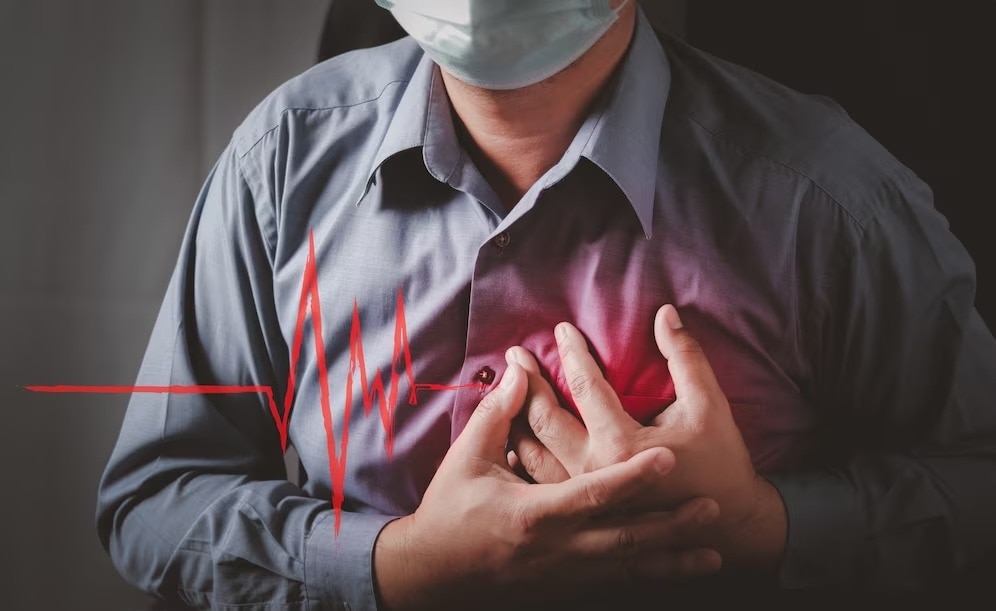Heart Health: A fluctuating heartbeat can be a cause for concern when it occurs frequently or is accompanied by certain symptoms.

The human heart is an incredible organ, tirelessly working to keep us alive. Its rhythmic beating and steady cadence are vital for our overall well-being and are paramount to ensuring that our bodies receive the oxygen and nutrients they need to function optimally. A rhythmic heartbeat indicates a consistent and steady pulse and a healthy heart typically operates within a range of 60 to 100 beats per minute. An irregular heartbeat could result in health conditions like high blood pressure, heart attack, stroke, and heart failure.
Importance of Steady Heartbeat
- Efficient blood circulation: A consistent rhythm ensures that blood is pumped effectively, delivering oxygen and nutrients to tissues and removing waste products.
- Stress reduction: A steady heartbeat is associated with reduced stress levels, promoting overall well-being and mental health.
- Fitness and endurance: Athletes often have lower resting heart rates due to their heart’s efficiency in pumping blood, indicating better cardiovascular fitness.
Understanding Fluctuating Heartbeat
Fluctuating heartbeats, medically known as arrhythmias, encompass irregular heart rhythms. These variations can take the form of a heartbeat that is too fast (referred to as tachycardia), too slow (bradycardia), or irregular in the pattern. Tachycardia involves an abnormally rapid heartbeat, typically exceeding 100 beats per minute at rest and its causes include anxiety, fever, anaemia, or heart-related issues. Bradycardia is the opposite of tachycardia, characterized by an unusually slow heartbeat, often below 60 beats per minute at rest. It can result from ageing, certain medications, or heart conditions. Arrhythmias refer to irregular heart rhythms. They can manifest as skipped beats, extra beats, or chaotic rhythms. Causes range from stress to heart disease.
Arrhythmias can occur for a multitude of reasons, including:
Stress and anxiety: Emotional stress can trigger rapid heartbeats. Learning stress management techniques can help stabilize heart rate.
Medical conditions: Chronic conditions like hypertension, diabetes, and thyroid disorders can affect heart rhythm. Managing these conditions is essential for heart health.
Lifestyle Factors: Smoking, excessive alcohol consumption, and a poor diet can contribute to heart rhythm disturbances. Adopting a heart-healthy lifestyle is key to prevention.
Fluctuating heartbeats carry significant repercussions, including compromised blood flow with tachycardia and bradycardia, resulting in dizziness, fatigue, and fainting; elevated risk of blood clots due to arrhythmias, potentially culminating in strokes or heart attacks; and diminished overall quality of life, marked by discomfort and heightened anxiety associated with persistent heart rhythm problems.
Treatment And Management
According to Dr. Kartikeya Bhargava, Sr. Director, Electrophysiology and Pacing, Heart Institute, Medanta, Gurugram, “There are several approaches to managing fluctuating heartbeats, and the choice of treatment depends on the underlying cause and the severity of the arrhythmia. Here are some common treatment options”
1. Lifestyle Modifications: In mild cases, lifestyle changes can significantly improve heart rhythm. These changes may include reducing stress through relaxation techniques like meditation or yoga, limiting caffeine and alcohol intake, and getting regular exercise.
2. Medications: For some individuals, medications are prescribed to regulate heart rhythm. These drugs can help control heart rate and prevent arrhythmias from occurring.
3. Cardioversion: In certain arrhythmia types, such as atrial fibrillation, the healthcare provider may suggest Cardioversion therapy. This involves the use of electrical shocks to restore a normal heart rhythm.
4. Catheter Ablation: In this surgical procedure, a catheter is threaded to the heart to destroy or isolate the tissue responsible for the arrhythmia. This procedure utilizes hot and cold energy to repel the abnormal signals and helps restore a healthy heart.
5. Implantable Devices: For persistent or life-threatening arrhythmias, implantable devices such as pacemakers or implantable cardioverter-defibrillators (ICDs) may be recommended. Pacemakers help regulate heart rate, while ICDs are designed to monitor and correct dangerous arrhythmias by delivering electrical shocks when necessary.
6. Seek Medical Help: Consult a doctor if you notice irregular heartbeats. They can diagnose the underlying cause and recommend appropriate treatment.
Moreover, individuals must prioritize prevention by emphasizing stress management techniques, maintaining a balanced diet, engaging in regular exercise, and abstaining from tobacco and excessive alcohol consumption. Utilizing wearable devices or apps can aid in monitoring heart rate and rhythm consistently, and consulting a doctor is imperative if any irregularities are observed.
A steady heartbeat is not just a rhythmic thump in our chests; it’s a fundamental component of our overall health. Understanding the significance of heartbeats, the causes of fluctuations, and their potential consequences empowers us to take control of our heart health. By seeking medical help when needed, adopting a heart-healthy lifestyle, and staying vigilant about our heart’s rhythm, we can ensure that it continues to beat steadily, supporting a long and healthy life.
